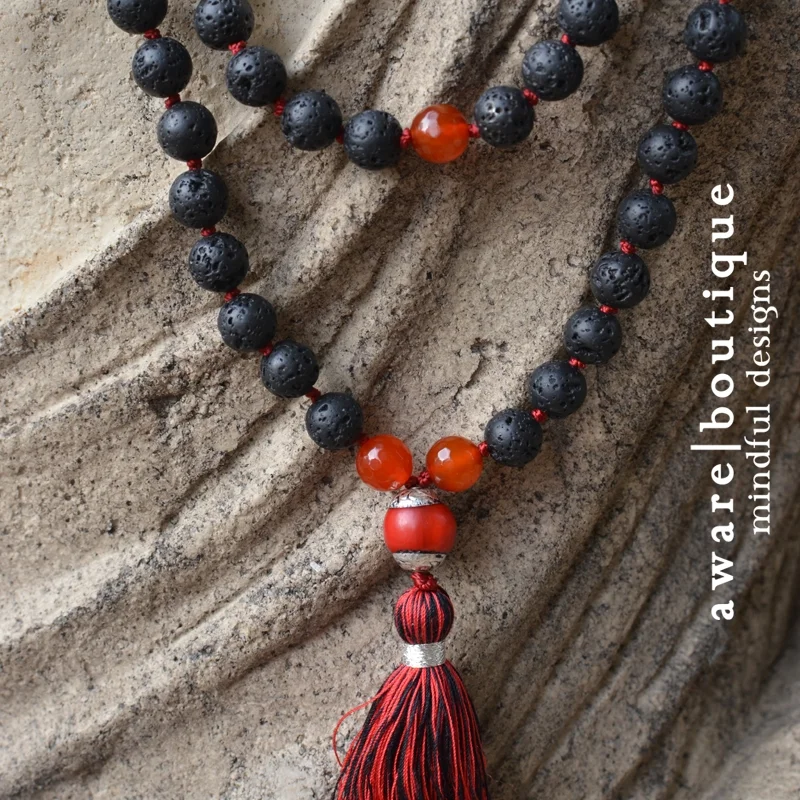In Baltic religion, earth is sacralized. Thus, the goddess Zeme is named after the direct translation of the Latvian word for earth. Sometimes called Zemes Māte, translated as "earth mother," she holds a very central role in the religious system of the Baltic peoples. Inspired by her undoubtable femininity, Zeme's role is that of a mother, in direct connection with the promotion of fertility. Her purview extends to all things in nature that follows the path of birth, growth, and death. Therefore, even humanity is drawn into this all-encompassing cult, from the first breath to the last. Credited with both the giving and the taking of life, Zeme embodies the cyclical rhythm of nature, showing that what comes from the earth must eventually return to it.
This mala necklace is part of our Earth Collection. This traditional Tibetan mala has 108 beads, plus 3 marker beads (not to be counted in meditation), and a guru bead and silk tassel. This particular mala is comprised of Genuine Baltic Amber, with Turquoise marker beads and Tibetan Brass guru bead with Turquoise inlay and a silk tassel.
Read More






